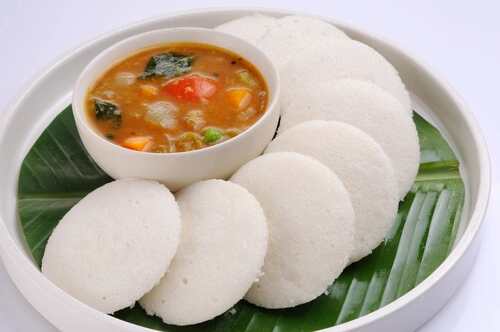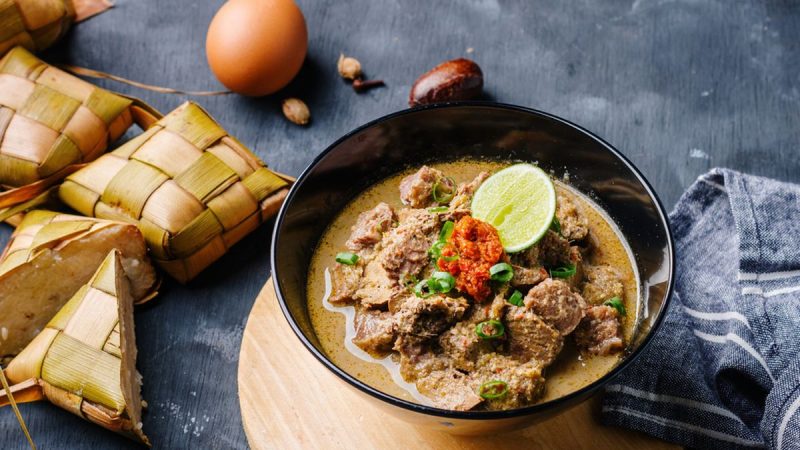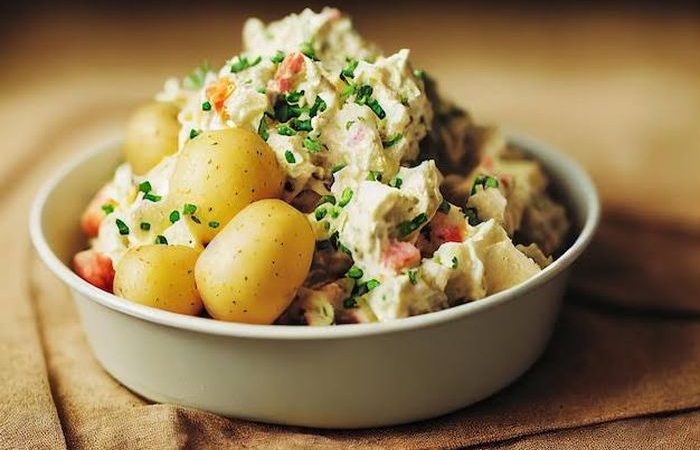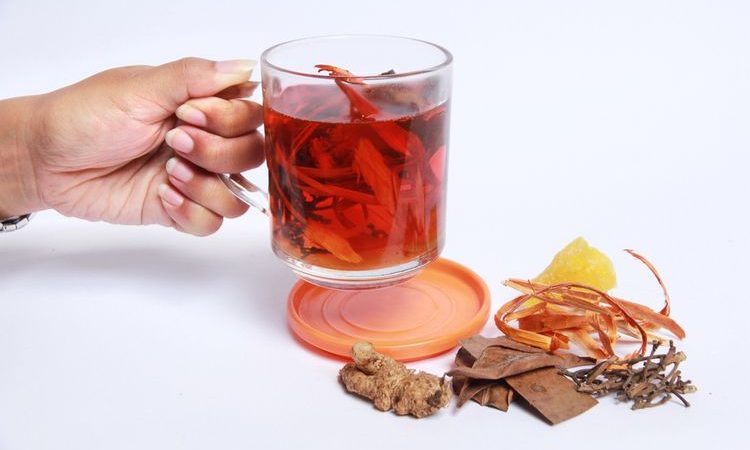Tantalizing, fluffy, and steamed to perfection, idli is a culinary gem that has taken the world by storm. Originating from South India, this soft and pillowy rice cake has gained immense popularity for its simplicity and versatility. Whether enjoyed as a hearty, hot breakfast or as a light, warm snack later in the day, idlis has become a beloved comfort food for people from across the seven seas.
Served alongside a piping bowl of sambhar and a dollop of coconut chutney, idlis offers up a delightful medley of complex flavors and textures that dance across the palate. The fermented batter lends these soft and featherlight treats a pleasant tang that awakens the taste buds, while the steaming process ensures an ultra light and airy bite. And the best part? This South Indian staple is incredibly nutritious too! Packed to the brim with essential vitamins, minerals and fiber, it is a wholesome choice for those seeking a healthy and filling meal.
With its snowballing popularity, demand for idli has far exceeded cultural boundaries. From trendy cafes with innovative twists to traditional bustling street food stalls, this South Indian classic has found its way onto menus worldwide. So if you haven’t yet taken a bite, it’s high time to join the idli loving tribe and experience the simple yet sublime joys of this delectable dish!
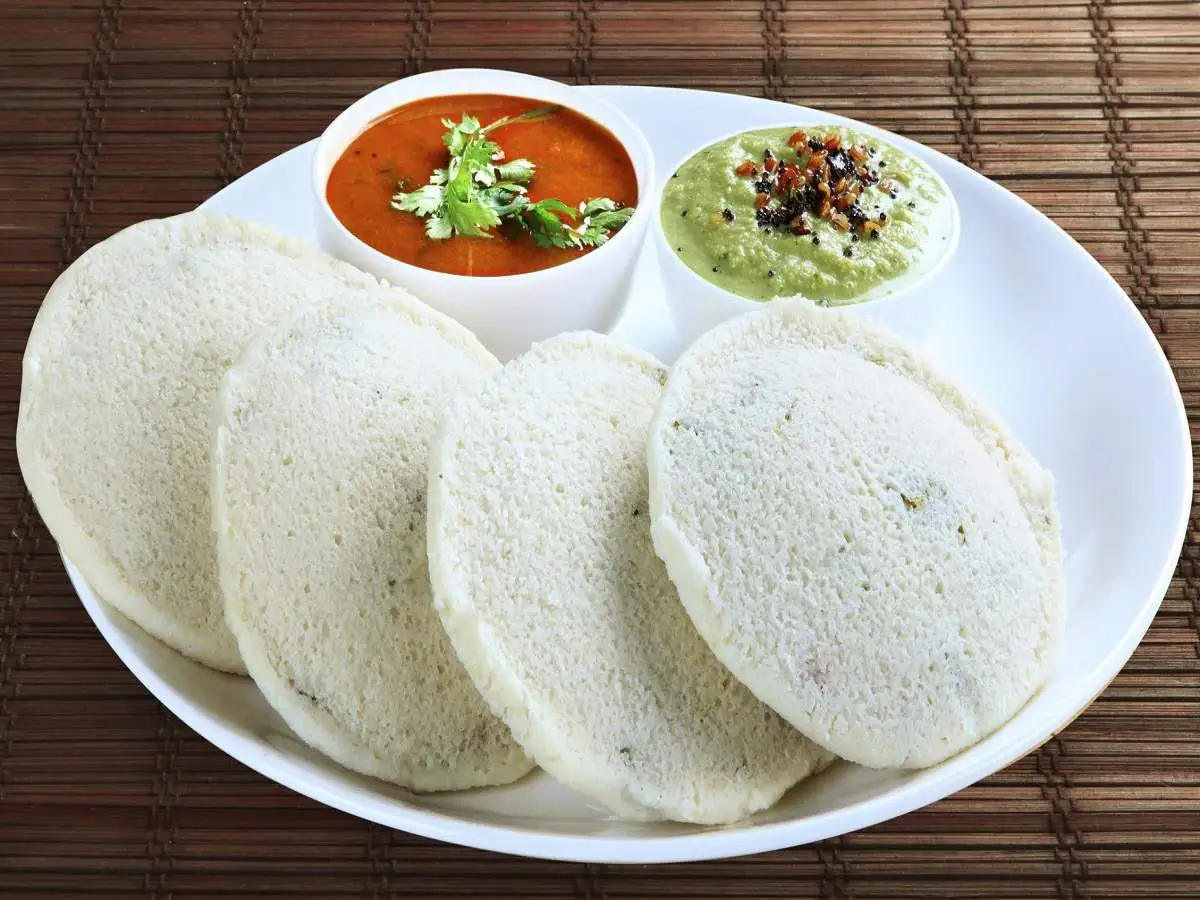
What is Idli?
Contents
- 1 What is Idli?
- 2 The History and Origin of Idlis
- 3 Ingredients Used in Idlis
- 4 The Traditional Idli-Making Process
- 5 Variations of Idli from Different Regions
- 6 Health Benefits of Idli
- 7 Tips for Making Perfect Idlis at Home
- 8 Serving Suggestions and Popular Accompaniments for Idli
- 9 Idli Recipes with a Twist
- 10 Celebrating the Versatility and Popularity of Idli
- 11 Author
But idli is more than food; it embodies the tradition of South Indian cuisine. In essence, idli is a sour and spongy cake made from a fermented dough of rice and urad dal, a type of lentil. In addition to unique tartness, fermentation has increased the availability of most essential amino acids, making idli not only savory but also nutritious. Typically, this breakfast staple is served hot, and the spongy nature of idli makes it a great complement to various chutneys and sambar, a tangy lentil and vegetable stew.
Idli’s neutral flavor profiles are an ideal complement to more powerful, hot flavors. However, the particular zest to idlis comes from its simplicity and aroma. From ingredients to cooking methods, idli has been distilled into a plethora of different forms. It spans all Indian regions and ethnicities; every iteration of danatoto idlis has been adapted to the broader Indian cuisine.
The History and Origin of Idlis
While many of the idli’s origins remain a mystery, one thing is certain. For centuries, idli has been an integral part of South Indian cuisine. However, the original version of this dish changed over time. Every region has added one’s unique interpretation and flavour fix to it. Yet, while the surface would differ, the fundamental idea of idli as a steamed, fermented cake remained the same. Today, idli has become a brand lunch box and restaurant dish. However, its popularity only testifies to the dish’s strengths and relevance. What was first a humble dish for breakfast has become one of Southern India’s most iconic food inventions. Yet, even today, its story is far from being over.
Ingredients Used in Idlis
The basic idli batter has rice and urad dal as its main components. While the former provides body and texture, the latter adds softness and a unique flavor to the idli. Depending on the recipe, these two may be taken in different proportions. Additionally, some idly recipes include fenugreek seeds that add a slight aroma and help ferment batter. Salt is an essential component, and as a form of cheat or when the rate of fermentation is slow, people may add a tiny amount of baking soda.
With time, modifications of the basic recipe emerged to replace traditional rice and urad dal with other grains and pulses to accommodate different dietary habits and definition. For example, ragi, oats and quinoa and other similar kinds of pulses, are employed to improve protein and nutrition.
The Traditional Idli-Making Process
Idli-making is more of an art that asks for your patience and precision. Please, follow the steps of soaking the rice and urad dal separately for hours until they soften. Then, grind them all to make a fine paste that becomes the batter. Although the fenugreek seeds will be already soaked with urad dal, you need to grind both into the mixture to ferment it.
After grinding, leave the mixture overnight or for 8-10 hours at least, according to the area’s normal temperature. Make sure you allow the mixture to ferment at any cost because it helps give idli taste, texture while significantly increasing the conducive bacteria content inside it. Next is to pour the fermented batter into idli molds and steam them for 10-15 minutes. Your perfectly soft, fluffy idlis are ready to be served with your favorite side dish.
Variations of Idli from Different Regions
However, as any traditional food item adapted to the regional style, Idli also has its variations across different parts of India. For example, in Karnataka, Idli is made as “thatte idli,” which translates to “plate idli” due the flat and large structure of the dish. Similarly, in Tamil Nadu, idli is prepared as “kanchipuram,” which include seasoning of cumin, pepper, and ginger, which makes it spicy variant of the traditional Idli recipe. Moreover, “rava idli,” idli prepared from semolina instead of rice and urad dal, is a quick and different variant yet as tasty as real idli, but it is very good . This evidence suggests that Indian cuisine is versatile in terms of style and ingredients as well.
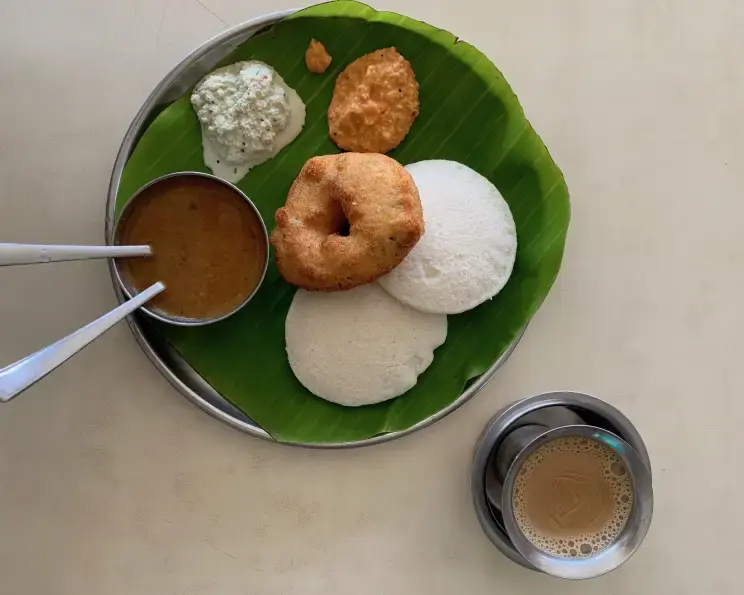
Health Benefits of Idli
Idli is celebrated not only for its taste but also for its nutritional profile. Being steamed, it is low in calories and fat, making it an ideal choice for health-conscious individuals.
The fermentation process increases the bioavailability of proteins and enhances the vitamin B content in the idli, contributing to improved digestion and immunity. Additionally, the presence of dietary fiber in the rice and lentils aids in regulating blood sugar levels and promoting heart health.
For those with dietary restrictions, idli offers a gluten-free alternative to bread and other wheat-based snacks. Its versatility also allows for the incorporation of various grains and pulses, further enhancing its nutritional value.
Tips for Making Perfect Idlis at Home
Achieving the perfect idli is a matter of mastering a few key steps in the preparation process. Here are some tips to help you make soft and fluffy idlis every time:
- Ensure that the batter is of the right consistency – not too thick and not too thin.
- Allow the batter to ferment properly. The ideal fermentation time can vary, so it’s important to consider the climate of your region.
- Grease the idli molds before pouring the batter to prevent sticking.
- Use a high-quality steamer or pressure cooker to steam the idlis evenly.
- Do not overfill the molds, as the idli needs space to expand.
By following these simple guidelines, you can enjoy homemade idlis that are soft, spongy, and delicious.
Serving Suggestions and Popular Accompaniments for Idli
Idli is typically served with a trio of accompaniments – sambar, coconut chutney, and tomato chutney – each adding a distinct flavor and texture to the meal. Sambar, a lentil-based vegetable stew, provides a hearty and spicy complement to the soft idlis, while coconut chutney adds a refreshing touch with its creamy texture and subtle sweetness.
In addition to these traditional accompaniments, idli can also be enjoyed with a variety of chutneys and sauces, including mint chutney, peanut chutney, and even spicy tamarind sauce. For a more substantial meal, idlis can be dunked in chicken or vegetable kurma, a rich and flavorful curry.
The versatility of idli extends beyond breakfast and snack time. Mini idlis tossed in spicy podi (a dry spice mix) or soaked in sambar make for a delightful appetizer or lunchbox treat.
Idli Recipes with a Twist
While traditional idli will always hold a special place in our hearts, there’s no harm in experimenting with new flavors and ingredients. Here are a few innovative idli recipes to spice up your mealtime:
- Spinach Idli: Incorporate pureed spinach into the batter for a nutritious and vibrant green twist.
- Cheese-Stuffed Idli: Add a cube of cheese to the center of each idli mold before steaming for a gooey, melty surprise.
- Masala Idli: Toss leftover idlis with sautéed onions, tomatoes, and a mix of spices for a quick and tasty snack.
These creative variations demonstrate the endless possibilities for reinventing this classic dish, ensuring that idli continues to captivate our taste buds in new and exciting ways.

Celebrating the Versatility and Popularity of Idli
Idli’s journey from a traditional South Indian staple to a global culinary sensation is a testament to its enduring appeal. With its simple ingredients, health benefits, and delicious taste, idli has captured the hearts of food lovers around the world.
Whether you prefer your idlis classic and unadorned or dressed up with innovative flavors, there’s no denying the charm of this versatile dish. So the next time you’re looking for a nutritious and satisfying meal, remember that idli is more than just food – it’s a celebration of culture, tradition, and the simple joys of eating well. If you appreciated this article and are curious about more flavorful dishes, please consider reading our article about Chicken Curry. It’s packed with insights and recipes that promise to enhance your culinary adventures!

